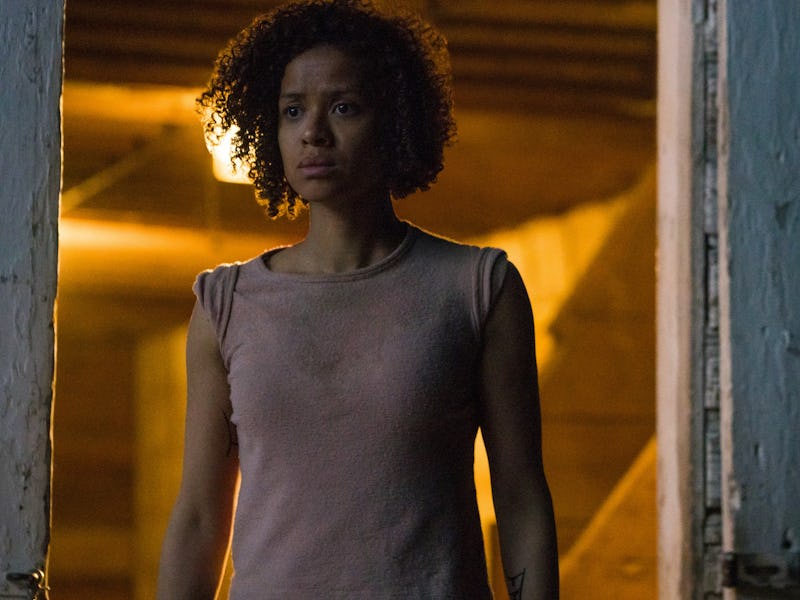An Indie Superhero Film on Max Did What the MCU Took Years to Accomplish
Underrated heroines get their time in the sun.

The world still struggles to see Black women as heroes. Black female-led films almost always perform well, but that fact continues to surprise studios, who seem convinced that an audience for films like The Woman King doesn’t exist.
Even Marvel Studios is taking its sweet time with its push for diverse stories. Their cinematic universe has been dominating for a decade and change, but it’s only now, in their 15th year, that a Black heroine is taking center stage. That can be frustrating for fans, especially considering that one indie drama already accomplished what bigger studios are reluctant to try.
Fast Color is the epitome of everything Marvel wants to juggle alongside its action spectacle. It has a complex emotional story, and it puts nuanced women of color at its center. It’s decidedly light on action and spectacle, a symptom of its smaller budget but not a detriment to a story that’s left with more room for drama. Director Julia Hart, along with her co-writer and producer Jordan Horowitz, strip the superhero origin story down to its spare parts. In fact, Fast Color isn’t really a superhero movie at all, but a family drama that uses genre tropes to explore generational trauma, heartbreak, and inner strength.
Fast Color sets its story in the heart of a near-future dystopia. The world is suffering a drought with no end, and Middle America’s been hit the hardest. It’s in this world that Ruth (Gugu Mbatha-Raw) has lived, albeit on the margins. She and all the women in her family were born with a unique talent that allows them to telepathically disassemble and reassemble objects. Ruth’s mother called it a parlor trick, but this power also produces a strange, vibrant aftereffect dubbed “the colors” only they can see.
Ruth is the only family member who’s struggled with this gift. She can’t see the colors, and her powers are manifesting earth-rattling tremors that have made her a target of a mystic government agency. She’s spent years on the run from scientists desperate to experiment on her, but with resources running low and no more allies to turn to, she’s forced to seek shelter in the one place she swore she’d never see again: home.
Matrilineal drama is the focal point of Fast Color.
The action comes in brief spurts, but the film’s propulsive tension lives in every scene. Things slow way down once Ruth returns to her family home, a farmhouse in the middle of nowhere. But it’s just as well, as Fast Color takes on a real emotional richness with the introduction of Bo (Toussaint), Ruth’s estranged mother, and Lila (Saniyya Sydney), the daughter Ruth left in her care.
It’s here, on the land her matriarchs have occupied for generations, that Ruth attempts to repair her fractured relationships. But starting over fresh won’t undo all the pain she left behind, or the pain she caused by leaving. If something’s broken, it stays broken. That’s the unofficial family mantra, and it covers a multitude of sins.
Whether it’s broken glass or a broken relationship, the family home is overflowing with a messy history. But the abilities that connect Ruth’s family have also cut them off from the world, and most of them have lived their whole lives in seclusion. Ruth, however, still has a major target on her back, which means the world may soon be coming to them.
Lorraine Toussaint delivers a master class in Fast Color.
The less said about the actual plot, the better. Fast Color is primarily a vehicle for Mbatha-Raw and Toussaint, two underrated actresses who tap into something brilliant together. In anyone else’s hands, their performances might have taken a backseat to a CGI-laden spectacle, but Hart knows what to keep her focus on.
Fast Color is a little hindered by its lack of resources. Compared to other superhero fare, even projects with half the budget of Marvel or DC, the film comes off as modest. That Hart and Horowitz struggled to find financing and distribution for the project is telling. Multiple studios felt Fast Color wouldn’t find an audience, which effectively doomed the film to obscurity.
Five years later, though, Fast Color is enjoying a minor reappraisal. The film has so much to say about power, responsibility, and the tense inner lives of mothers and daughters. It’s a shame it feels like a prelude to something bigger, but it’s still worth the watch for its knock-out performances and lived-in production value. As a palette cleanser for Marvel’s breathless assembly line of Content, it reveals what’s still possible within the superhero genre, and what happens when the industry’s most overlooked artists get a chance to tell a good story.